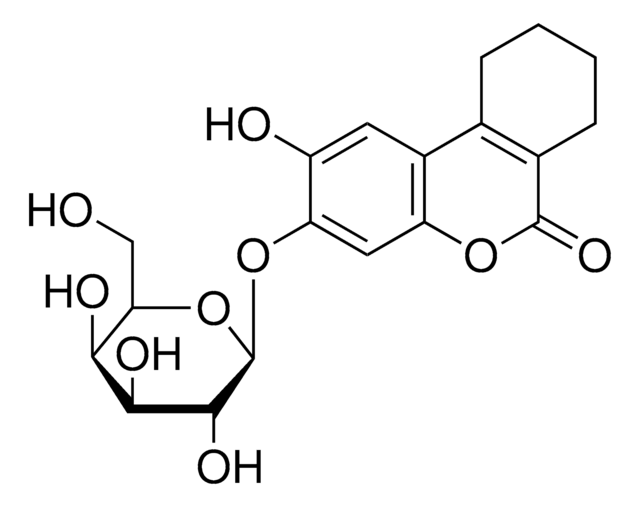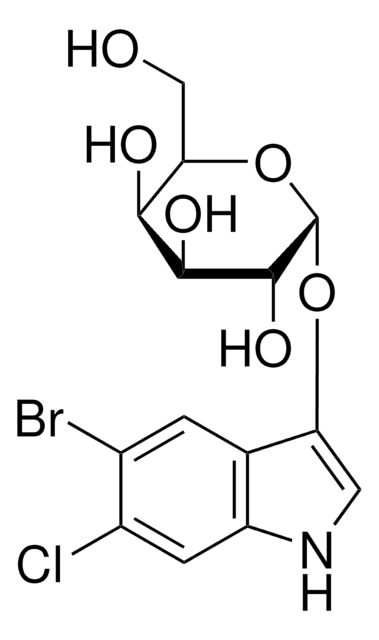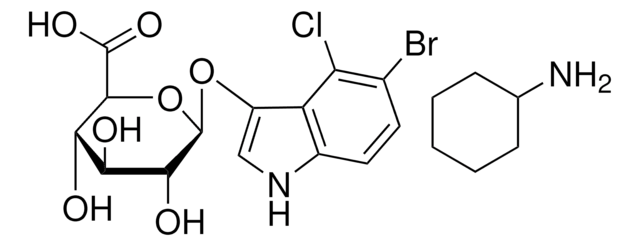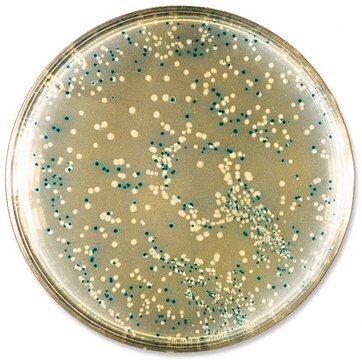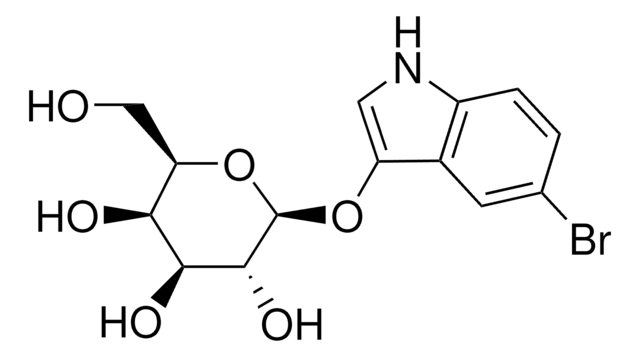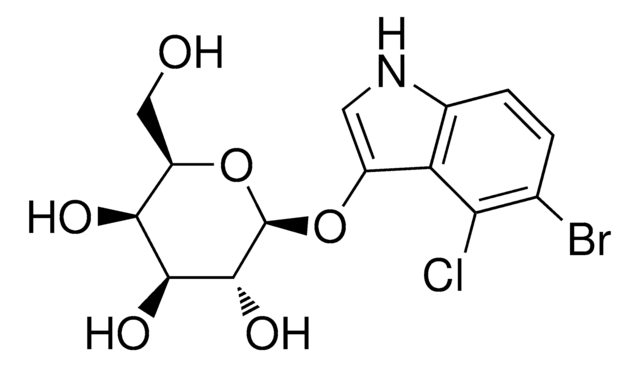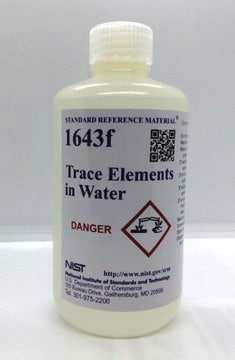S7313
S-Gal® sodium salt
reagent for selection of recombinant bacterial clones
Synonim(y):
3,4-Cyclohexeneoesculetin-B-D-galactopyranoside sodium salt
About This Item
Polecane produkty
klasa czystości
for molecular biology
sterylność
non-sterile
Próba
≥95% (HPLC)
Formularz
powder
IVD
not for in vitro diagnostic use
rozpuszczalność
H2O: 100 mg/mL
przydatność
suitable for β-galactosidase test
temp. przechowywania
room temp
Opis ogólny
Zastosowanie
Cechy i korzyści
- Bardziej intensywny kontrast kolorów niż X-gal
- Rozpuszczalny w wodzie i autoklawowalny dla najłatwiejszego użycia
- Doskonały do stosowania w automatycznych licznikach kolonii
- Nie ma potrzeby sporządzania roztworów podstawowych
Inne uwagi
. Pożywka przygotowana z S-Gal® jest umiarkowanie ciemna ze względu na obecność cytrynianu żelazowo-amonowego. To ciemniejsze tło często zapewnia lepszy kontrast do automatycznego liczenia lub izolacji kolonii.
Przestroga
Zasada
Powiązanie
Rekonstytucja
Informacje prawne
produkt powiązany
Kod klasy składowania
11 - Combustible Solids
Klasa zagrożenia wodnego (WGK)
WGK 3
Temperatura zapłonu (°F)
Not applicable
Temperatura zapłonu (°C)
Not applicable
Środki ochrony indywidualnej
Eyeshields, Gloves, type N95 (US)
Wybierz jedną z najnowszych wersji:
Certyfikaty analizy (CoA)
Nie widzisz odpowiedniej wersji?
Jeśli potrzebujesz konkretnej wersji, możesz wyszukać konkretny certyfikat według numeru partii lub serii.
Masz już ten produkt?
Dokumenty związane z niedawno zakupionymi produktami zostały zamieszczone w Bibliotece dokumentów.
Klienci oglądali również te produkty
Nasz zespół naukowców ma doświadczenie we wszystkich obszarach badań, w tym w naukach przyrodniczych, materiałoznawstwie, syntezie chemicznej, chromatografii, analityce i wielu innych dziedzinach.
Skontaktuj się z zespołem ds. pomocy technicznej